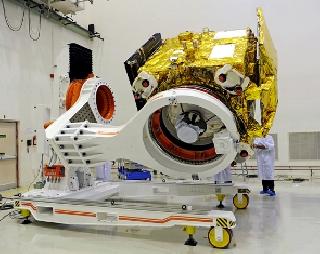
A file photo.
WASHINGTON (PTI): Astronomers using data from NASA's Kepler space telescope have discovered a distant planetary system with multiple planets orbiting at a severe tilt to their host star.
Such tilted orbits had been found in planetary systems featuring a 'hot Jupiter', a giant planet in a close orbit to its host star. But, until now, they hadn't been observed in multiplanetary systems without such a big interloping planet.
"This is a new level of detail about the architecture of a planetary system outside our solar system," said study co-author Steve Kawaler, an Iowa State University professor of physics and astronomy and a leader of the Kepler Asteroseismic Investigation.
"These studies allow us to draw a detailed picture of a distant system that provides a new and critical test of our understanding of how these very alien solar systems are structured," Kawaler said.
The research team studied regular changes in the brightness of the host star, Kepler-56, an ageing red giant star with two planets in close orbits and a massive third planet in a distant orbit.
By measuring those oscillation frequencies and using spectroscopy data about the star's temperature and chemistry, researchers measured the star's diameter and other properties.
The study reported Kepler-56 is more than four times the radius of our Sun. Its mass is also 30 per cent greater than our Sun. It is about 3,000 light years from Earth.
Kawaler was also part of the team that used studies of the changes in brightness to help determine the tilt of the rotation axis of Kepler-56. That axis is tilted 45 degrees to the line of sight from Earth.
Generally, Kawaler said, the simplest way for a planetary system to develop is with the orbits in the same plane as the host star's equator.
That typically indicates the planets formed from a thin disk of dust and gas surrounding the host star. The planets in our solar system all orbit within 7 degrees of the plane of the Sun's equator.
A planet orbit that tilts away from other planets or from the host star's equator can mean the planet had a traumatic youth, Kawaler said.
It may have been pulled into a different plane after encountering another planet or planets. That's generally the case with migrating hot Jupiters.
In the case of Kepler-56, however, the more massive outer planet seems to be maintaining the tilted orbits of the two inner planets.
"It issues a continuous tug on the orbit of the smaller ones, pulling them into their inclined orbits," Kawaler said.
Daniel Huber of NASA's Ames Research Center in Mountain View, California, is lead author of the study published in journal Science.
 Next Article
Next Article












The Indian Air Force, in its flight trials evaluation report submitted before the Defence Ministry l..
view articleAn insight into the Medium Multi-Role Combat Aircraft competition...
view articleSky enthusiasts can now spot the International Space Station (ISS) commanded by Indian-American astr..
view article